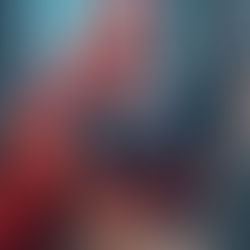HEY Mom... Where Does Debt Come From?
When we talk about debt pulling spending power forward, it means that people can buy things even if they don't have enough money saved up. They can do this by borrowing money from banks or other sources. So instead of waiting to save money over time, they can spend it right away. Where does all this debt come from?

Imagine you have $10, and you want to buy a sweater that costs $20. If you don't have enough money, you can borrow $10 from someone and buy the sweater now. But later on, you will have to pay back that $10 you borrowed, with interest.
When a government wants to create more money, they often print more bills or create it digitally. This increases the total amount of money in circulation. But if there's more money available, it often decreases the value of each dollar.
Think of it this way: Imagine you have a cake that cost $4 and cut it into four pieces, now each pieces represents $1. If you suddenly cut the cake into eight pieces, each piece will represent only $0.50. The value of each piece becomes smaller because there are more pieces. That is no different than breaking a $20 into four $5 bills.
What if someone created a new cake out of nowhere. There are now two cakes, worth $4 each. You could say the universe of cakes had a notional value of $4 and now the universe of cakes has a notional value of $8. That is good, more cake! But is that good for you. Previously you had the only cake, you owned 100% of the cake market. Now you only own 50% of the cake market. You could say your cake (no matter how you slice it) is actually worth 50% less as there is more of it available. Oversimplification I know, but..
Similarly, when more money is printed, the value of each dollar can decrease. This means that the same amount of money you have may not be able to buy as much as it used to. So, things can become more expensive because the value of the money has decreased, and this is often experienced as inflation. My house I bought for $500,000 is now worth $1,000,000. That feels like a notional double in value, but every other house costs $1,000,000 so if I sell it the same house only buys me the same house, there is more notional money, BUT no more buying power.
This is why it's important for governments to manage the printing of new money carefully, so they don't create too much debt or decrease the value of the currency too quickly. It's a delicate balance to ensure that people have enough money to spend, but the value of the money remains stable.
When a bank creates a loan, the money for that loan does not come directly from any specific source. Instead, banks have the ability to create money through a process called fractional reserve banking. This is how new cakes appear for there to be record borrowing - again when you see more borrowing you are seeing new money being created!
How it generally works:
Deposits: Banks accept deposits from customers, which include individuals, businesses, and even other banks. These deposits are considered liabilities for the bank because they owe the depositors the money they have deposited.
Reserves: Banks are required by regulations to keep a portion of these deposits as reserves. These reserves are a fraction of the total deposits received and are held either in the form of physical cash or as deposits with the central bank.
Lending: Banks are then able to lend out a portion of the deposits they have received, based on the reserve requirement set by regulatory authorities. This means that banks can create loans by extending credit to borrowers often 10X what they have as deposits.
Money Creation: When a bank creates a loan, the money is essentially "created" as a new deposit in the borrower's account. The bank is not lending out the actual physical cash from its reserves but rather creating a digital record of the loan amount as a deposit.
If the borrower deposits that money back in their account at the bank, the bank now has a new deposit on which they can create new reserves to do more lending which creates more money!
In this way, when you take out a loan from a bank, the money you receive is not directly transferred from another customer's account or the bank's reserves. It is newly created by the bank as a loan, which increases the overall money supply in the economy. More cake for you!
It's important to note that the bank expects the borrower to repay the loan with interest over time. As the borrower makes loan repayments, the money is essentially "destroyed" as the corresponding deposit is reduced, and the bank's liabilities (the borrower's debt) decrease. That is called amortizing, which literally means 'killing over time'.
This process of money creation through lending is a fundamental aspect of how banks operate and contribute to the overall functioning of the economy.
Mortgage Advisor Tip: If borrowing is increasing usually the society is growing faster because that is being pulled forward for spending now, the question - how does it get paid back without destroying future growth? If you keep making new money the world is awash in cake, and then you run into the problem of cake losing it value if there is too much of it.




















































































Excellent article detailing the real estate landscape in Florida. Your presentation of the facts and data is impressive and insightful. If you're seeking assistance with First Time Home Buyer Florida Loans, DSCR Loan Florida or Hard Money Loans in Florida, we’re here to help. Contact us at 800-826-5077 for personalized support and guidance.